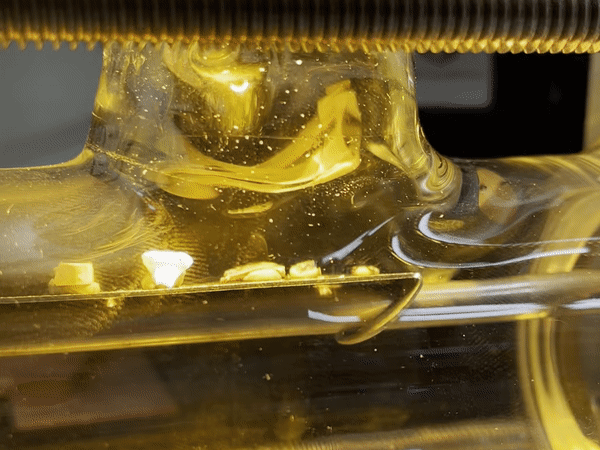Examining the chemistry of fossil mammals: stories from the past


Kendra Chritz, Scott Blumenthal
Looking at the chemistry of ancient biological material (teeth, bones, soils) helps scientists to tell what past environments were like. But have you ever wondered what it may look like when sampling fossil mammals? Check out this animated image by EOAS geochemists & paleoecologists!
What you are looking at now is the inside of a custom-built laser ablation chamber for tiny in-situ sampling of enamel for carbon and oxygen isotopes. The laser spots are 200-500 microns (µm; 10-6 m) in diameter. The little puff of dust from the tooth enamel being shot contains CO2 that records the diet and environment of the organism while it was living.
This work is being done by Dr. Kendra Chritz, Assistant Professor at the Department of Earth, Ocean and Atmospheric Sciences, in collaboration with Dr. Scott Blumenthal, who is visiting UBC as a Research Associate currently, at the University of Oregon where this video was taken. "The goal of my research program is to understand the intimate ties between people and ecosystems across many different timescales using geochemistry, and how these environmental records provide the crucial data needed to understand the modern planet during the Anthropocene as we know it," says Dr. Chritz.
Inside the chamber, the scientists are sampling two very different sets of material. The first are middle-Holocene aged gerbil incisors extracted from a headdress made by a man 5,000 years ago. This is part of Dr. Chritz’s long-term collaborations and work on Kenyan prehistory and late Quaternary environmental change. The original excavation, as the New York Times reported, found that "most [people] were buried with ornamentation, including an infant who wore an ostrich eggshell bracelet. One man was buried with a headdress decorated with what researchers figured out were 400 carefully arranged gerbil teeth. He probably wore the headdress during life."
The second set of samples are teeth from multituberculates, our ancient mammalian ancestors, from the late Cretaceous. These particular rodent-sized mammals lived alongside dinosaurs. "We [Chritz and Blumenthal, along with PCIGR] are beginning a project with the Denver Museum of Natural History to explore how the diet and ecology of mammals changed following the K/Pg mass extinction, after which they evolved and created the mammal-driven world we live in today," says Dr. Chritz. This collaboration is building off of this project, also reported in the New York Times in 2019.
We also had a conversation with Dr. Chritz in our On Earth weekly podcast series: click here to learn more!